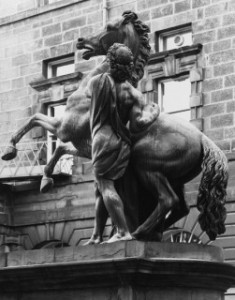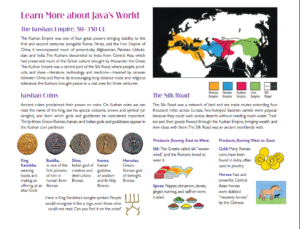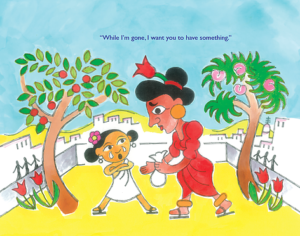Click here for direct link to audio podcast Episode #52.
Click here for previous episodes.
Congratulations to Ken Perkins from Belmont for being the first to send me a shout out about our 50th episode! I’ll be signing and sending Ken a real old-fashioned (not PDF) version of my Scholastic book Read Aloud Plays: The Iliad, The Odyssey, and The Aeneid. Thanks for listening, Ken!
Aaahhh, yes. I took us all the way back to the dawn of time to understand the path that led to the unforgettable people and events in Mediterranean Europe and Asia Minor. And chief of those unforgettable people, of course, is Alexander the Great. Brilliant, courageous, literary, and gosh-darned handsome, his is one of those few extraordinary life stories that never cease to instruct and amaze. He declared himself the son of a god, defeated the Persian King Darius and his empire, marched his faithful army to Egypt through Persia and into India, and married the Bactrian princess, Roxanna. When Alexander died, his empire was divided amongst his top generals. His body was to be entombed in Macedonia, but in transit the funeral bier was commandeered by Ptolemy (another superb leader) and taken to Egypt. There, Alexander’s body was lain in a royal tomb at Alexandria and became a place of pilgrimage up through the 4th century CE, when it was lost to history. Perhaps one child in our midst will succeed in locating the famed tomb and sarcophagus of Alexander the Great. Fingers crossed!
 One of my favorite stories is of the junior-high aged Alexander astonishing his father and some courtiers by taking control of the wild and spirited Bucephalus. This great horse, whose name means “ox-headed,” in reference to its enormous head, conquered half the known world with his master. Covering thousands of miles and riding into battle on a regular basis, Bucephalus was truly the original “War Horse.” He reportedly died at 30 years old after suffering wounds in the Battle of Hydaspes in June of 326 BCE. Alexander was stricken with grief and honored his old friend by naming a city after him, Bucephala.
One of my favorite stories is of the junior-high aged Alexander astonishing his father and some courtiers by taking control of the wild and spirited Bucephalus. This great horse, whose name means “ox-headed,” in reference to its enormous head, conquered half the known world with his master. Covering thousands of miles and riding into battle on a regular basis, Bucephalus was truly the original “War Horse.” He reportedly died at 30 years old after suffering wounds in the Battle of Hydaspes in June of 326 BCE. Alexander was stricken with grief and honored his old friend by naming a city after him, Bucephala.
To honor this lovely book, here is a statue of Alexander and Bucephalus in Edinburgh itself. How did I miss this statue when I was there? I hope I lead you to investigate this most famous of historical personages. Enjoy the first in this series of readings from Plutarch’s Lives for Boys & Girls, retold by W.H. Weston, and illustrated by W. Rainey, published in London & Edinburgh in the early 1900′s.











